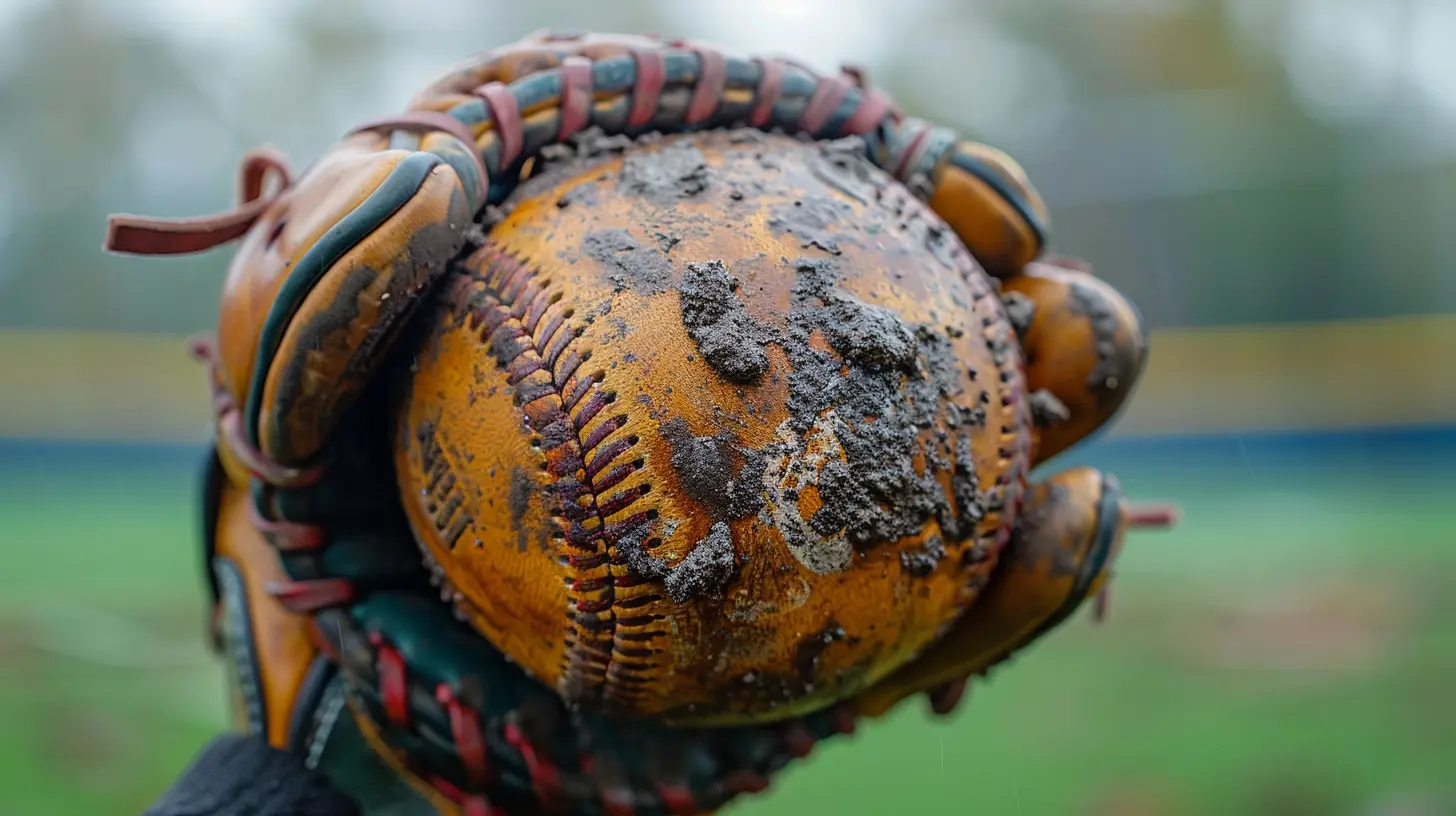How to Avoid Wrist and Hand Injuries in Contact Sports
19 November 2025
Contact sports are thrilling, right? There's nothing quite like the rush of adrenaline when you're out on the field, the court, or the rink, completely focused on the game. But with that excitement comes a certain level of risk, especially when it comes to injuries. And while we often think about knee injuries, concussions, or ankle sprains, one area we tend to overlook is our hands and wrists. Yet, they are some of the most vulnerable parts of our bodies when playing contact sports.
So, how can you protect yourself from wrist and hand injuries while still giving it your all? Let's dive into it. By the end of this article, you'll have a game plan to keep your hands and wrists safe and strong!

Why Are Wrist and Hand Injuries So Common in Contact Sports?
Think about it: In almost every contact sport, your hands and wrists are constantly in play. Whether you're catching a ball, tackling an opponent, or blocking a shot, your hands and wrists bear a lot of the brunt. They’re smaller and more delicate compared to other parts of your body, which makes them more prone to injury.And let's be real—most of us don’t really give much thought to protecting them. We worry about shin guards, mouthguards, or helmets, but hand and wrist protection often take a backseat. This is a mistake. Once you injure your wrist or hand, you're sidelined, and trust me, no one wants to sit out due to something preventable.
Common Types of Wrist and Hand Injuries in Contact Sports
Before we jump into prevention, let's quickly go over the most common types of injuries athletes face in this area:- Sprains: A sprain occurs when the ligaments (the tissue connecting bones to other bones) are overstretched or torn. Wrist sprains are particularly common when you fall and instinctively put your hands out to break the fall.
- Fractures: Hand and wrist fractures are common in contact sports, especially when there’s direct impact. For example, a boxer may fracture their hand during a punch, or a football player could fracture their wrist by falling awkwardly.
- Tendinitis: This is an overuse injury that results from repetitive motions, causing inflammation of the tendons. It’s common in sports like basketball or tennis where gripping and wrist movements are frequent.
- Dislocations: These happen when the bones in your hand or wrist are forced out of their usual alignment. Contact sports like rugby or hockey can easily cause dislocations, especially during rough tackles or falls.
- Carpal Tunnel Syndrome: While often associated with desk jobs, athletes can also suffer from carpal tunnel syndrome. This happens when pressure on the median nerve in your wrist causes pain, numbness, or weakness.
The Impact of Wrist and Hand Injuries on Performance
A hand or wrist injury can severely limit your ability to perform in your sport. Imagine being a basketball player with a sprained wrist—good luck with your shooting accuracy. Or, if you're a hockey player with a fractured hand, your grip on the stick is compromised. These injuries don’t just hurt physically; they can also mess with your confidence and mental game.But here's the good news: Many of these injuries are preventable with the right precautions.

How to Prevent Wrist and Hand Injuries in Contact Sports
1. Always Warm Up and Stretch
Okay, I know it sounds boring, but warming up is absolutely essential. A proper warm-up increases blood flow to your muscles, making them more pliable and less prone to injury. Stretching helps maintain flexibility, which reduces the risk of sprains and strains.Focus on stretches that engage your wrists and hands. Try wrist circles, where you gently rotate your wrists in both directions. Finger stretches and forearm stretches also help to improve mobility and flexibility. These small movements can make a big difference.
2. Strengthen Your Wrists and Hands
If you want to avoid injuries, you've got to build strength in the right areas. Strengthening your wrists and hands can provide extra support during intense activities like tackling or punching.Here are a few easy exercises you can do to strengthen your wrists and hands:
- Wrist Curls: Using a light dumbbell, hold your arm out with your palm facing up, and slowly curl your wrist up and down. This works your forearm muscles, which support your wrists.
- Grip Strengthener: You can use a grip strengthener tool, or simply squeeze a tennis ball for a few seconds at a time.
- Finger Push-ups: These are like regular push-ups, but instead of using your palms, you balance on your fingers.
- Rice Bucket Exercise: Stick your hand into a bucket of uncooked rice and move your fingers in every possible direction. This is a great way to work on grip strength and finger mobility.
3. Use Proper Technique
Bad form is often a major contributor to injuries. Whether you're tackling in football or punching in boxing, using the right technique can significantly lower your risk of injury.For example, in sports like football or rugby, learning how to fall properly can save your wrists. Instead of landing on your hands, try to roll through your shoulders or land on your forearms. In sports like boxing, always wrap your hands properly and maintain proper punching form to prevent fractures.
4. Wear Protective Gear
If your sport allows it, wear protective gear. Wrist braces, padded gloves, and tape can provide extra support and reduce the risk of injury. For example, in sports like martial arts, boxing, or hockey, wrist wraps and gloves are essential for protecting your hands and wrists from impact.While some athletes avoid wearing extra gear because they find it uncomfortable, it’s a small price to pay for injury prevention. Plus, many types of protective gear are lightweight and flexible, so they won’t restrict your movement.
5. Take Breaks and Listen to Your Body
Overuse injuries like tendinitis often come from pushing your body beyond its limits. It can be tempting to power through pain, especially when you're in the heat of competition, but your body is trying to tell you something.If you notice any pain or discomfort in your wrists or hands, don’t ignore it. Take a break, ice the area, and consult a professional if needed. It’s better to miss a few practices than to be out for an entire season due to a serious injury.
6. Improve Your Reaction Time and Coordination
Most wrist and hand injuries occur during unexpected impacts, like when you fall or get tackled. Improving your reaction time and hand-eye coordination can help you better anticipate and avoid these situations.Drills like catching a ball in different positions, practicing quick hand movements, or working on your reflexes can make a noticeable difference. The faster your body reacts, the better you can protect your wrists and hands from harm.
7. Stay Hydrated and Maintain Proper Nutrition
Your body performs best when it's well-hydrated and nourished. Dehydration can lead to muscle cramps or fatigue, increasing the likelihood of injury. Drink plenty of water before, during, and after your training or game.Additionally, make sure you're getting enough protein, calcium, and vitamin D to support bone and muscle health. A well-balanced diet can help strengthen your ligaments, tendons, and bones, making them more resilient to injury.

What to Do If You Experience a Wrist or Hand Injury
Even with the best precautions, injuries can happen. If you experience a wrist or hand injury, it’s important to act quickly. Here’s what to do:1. Rest: Stop playing immediately. Continuing to play can make the injury worse.
2. Ice: Apply ice to the injured area for 15-20 minutes every few hours. This helps reduce swelling.
3. Compression: If possible, wrap the injured area with a bandage or brace to limit movement and reduce swelling.
4. Elevation: Keep the injured hand or wrist elevated above your heart to reduce swelling.
5. Consult a Doctor: If the pain persists or if you suspect a fracture or dislocation, see a healthcare professional as soon as possible.

Wrapping It Up
Your hands and wrists are essential to your performance in contact sports, so taking steps to protect them is a no-brainer. From strengthening exercises and proper technique to wearing protective gear, there are plenty of ways to reduce your risk of injury. And remember, if you do get injured, take care of it immediately to avoid long-term damage.So, next time you gear up for a game or a practice, give your wrists and hands the attention they deserve. After all, you can’t catch, punch, or tackle without them!
all images in this post were generated using AI tools
Category:
Injury PreventionAuthor:

Umberto Flores

